Table of Contents
Introduction
Tantra Yoga is an ancient spiritual practice that originated in India and has gained popularity in the modern world due to its many benefits. Tantra Yoga is not just about physical postures or breathing techniques but also encompasses a greater and deeper holistic approach to life, including well-being, relationships, and self-awareness. In this blog, we will explore the Tantra Yoga and how it can help individuals cope with the stresses and challenges of modern life as a relevance in modern world.
Understanding Tantra Yoga

What is Tantra Yoga?
It is a holistic practice that combines physical postures, breathing exercises, meditation, visualization, and other techniques to promote spiritual growth, self-awareness, and overall well-being.
In Tantra Yoga, the human body is seen as a microcosm of the universe, and the practice is aimed at harmonizing the individual with the cosmic consciousness. The practice emphasizes the cultivation and control of energy, especially physical and mental energy, to enhance physical, mental, and spiritual health.
Tantra Yoga is often associated with orthodox practices and rituals, but it is important to note that Tantra Yoga is not solely focused on the physical aspect. Rather, it recognizes the importance of spiritual energy as a powerful force for transformation and emphasizes the importance of channeling this energy in a positive way.
Who is The Introducer or Guru of Tantra?
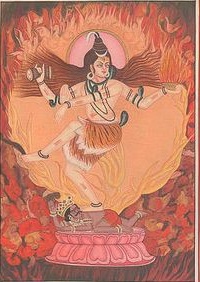
The term “Adiguru” or “Adiyogi” is a commonly used term in the context of Tantra or any specific spiritual tradition. However, “Adi” is a Sanskrit word that means “primordial” or “original,” and “Guru” refers to a spiritual teacher or guide.
In Hindu traditions, the term “Adiguru” may be used to refer to Lord Shiva, who is considered the first yogi or teacher and the ultimate source of all knowledge and wisdom. In this context, “Adiguru” means the God of Gods “Mahadeva” or Lord Shiva.
It is important to note that the term “Adiguru” may have different meanings and interpretations in different spiritual traditions, and it is always best to learn the context from teachers within a particular tradition to gain a deeper understanding.
How is Tantra Yoga Different from Other forms of Yoga?
Tantra Yoga is different from other forms of yoga in several ways:
Holistic Approach – Sudhdha Chetana
While other forms of yoga focus primarily on physical postures (asanas), Tantra Yoga takes a more holistic approach that encompasses physical, mental, and spiritual aspects of the self. Tantra Yoga recognizes that the body, mind, and spirit are interconnected and seeks to balance and harmonize these aspects of the self.
Emphasis on Energy – Shakti Chetana
Tantra Yoga places a great emphasis on the cultivation and control of energy, especially sexual energy. This energy is seen as a powerful force for transformation and is used to promote physical, mental, and spiritual well-being.
Integration of Sexuality – Kama Chetana
Unlike other forms of yoga, Tantra Yoga recognizes the importance of sexuality as a natural and healthy part of human experience. However, Tantra Yoga approaches sexuality in a spiritual context, rather than a purely physical or erotic one.
Use of Mantras and Yantras – Mantra Chetana
Tantra Yoga makes use of mantras (sacred sounds) and yantras (sacred geometrical symbols) to enhance spiritual practice and promote spiritual growth. These tools are believed to have a powerful effect on the mind and body and are used to channel energy and promote inner transformation.
Focus on Experience – Avyabhabati Chetana
Tantra Yoga greatly emphasizes personal experience and individual exploration, rather than following strict rules or dogma. Tantra Yoga encourages practitioners to develop their own practice based on their unique needs and experiences.
The Philosophy and Principles of Tantra Yoga
The philosophy and principles of Tantra Yoga are rooted in the broader Tantric tradition, which is based on the concept of Two divine energy Shiva and Shakti, or in India we say Prakriti and Purusha. Tantra Yoga sees the universe as a manifestation of this energy and seeks to connect the individual practitioner with this universal consciousness.

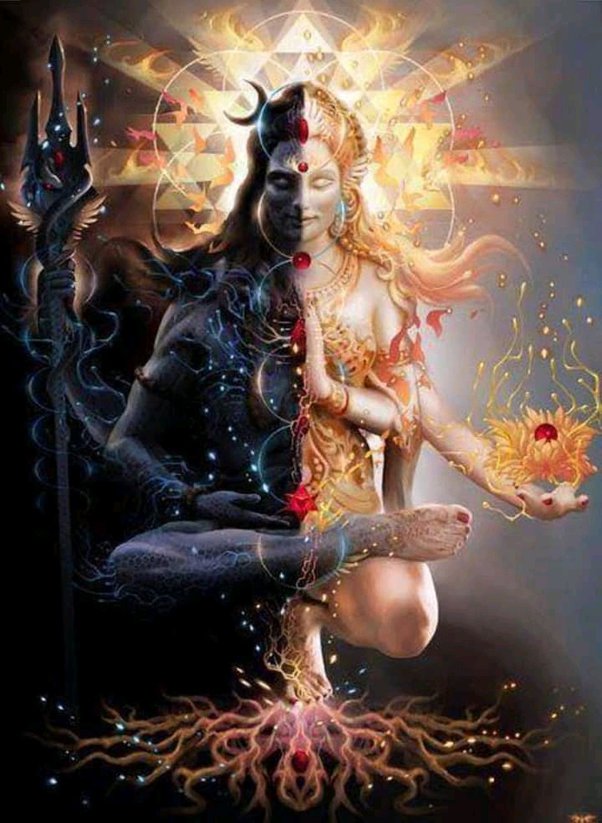
Some of the key principles and philosophies of Tantra Yoga include:
- Non-Dualism or Advaitavada: Tantra Yoga sees all aspects of the universe, including the individual self and the divine, as part of a single, non-dual reality. This means there is no separation between the individual and the divine and that the individual self can be seen as a microcosm of the entire universe.
- Kundalini: Tantra Yoga places a great emphasis on the concept of Kundalini, which is seen as the dormant spiritual energy that lies at the base of the spine. The practice of Tantra Yoga aims to awaken and harness this energy, which is believed to be the source of all creative and transformative power.
- Shakti: Tantra Yoga recognizes the importance of the feminine principle or Shakti, which is seen as the creative and transformative force of the universe. The practice of Tantra Yoga aims to connect the practitioner with this energy and use it for spiritual growth and transformation.
- Five Elements or Pancha Tatwa: Tantra Yoga recognizes the importance of the five elements (earth, water, fire, air, and space) in the physical and spiritual world. These elements are seen as the building blocks of the universe, and Tantra Yoga seeks to balance and harmonize them within the individual practitioner.
- Tantric Texts: Tantra Yoga draws on a variety of ancient Tantric texts, including the Tantras, which are believed to contain knowledge and practices for spiritual growth and transformation.
The Techniques and Practices of Tantra Yoga
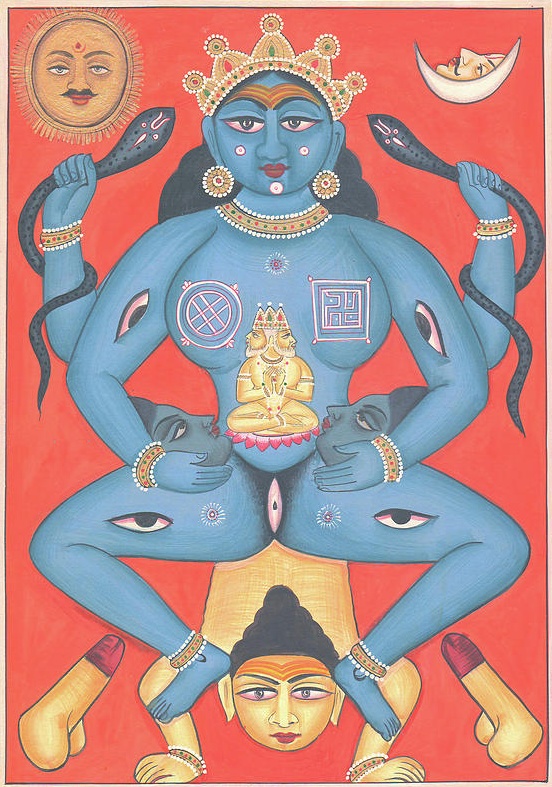
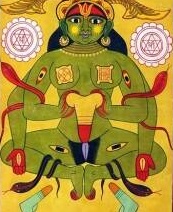
Tantra Yoga incorporates a variety of techniques and practices that aim to balance and harmonize the physical, mental, and spiritual aspects of the self. These practices include:
Asanas – Physical Exercise
Like other forms of yoga, Tantra Yoga incorporates physical postures or asanas that aim to improve flexibility, strength, and overall health. These postures are also used to stimulate and balance the flow of energy in the body.
Pranayama – Breathing Techniques
Pranayama refers to the practice of controlling the breath, which is believed to have a powerful effect on the mind and body. Tantra Yoga incorporates a variety of pranayama techniques, such as alternate nostril breathing and the three-part breath, to enhance energy flow and promote relaxation and focus.
Dhyan – Meditation
Tantra Yoga places a great emphasis on meditation, which is seen as a powerful tool for spiritual growth and self-awareness. Meditation in Tantra Yoga may involve visualization, chanting, or focusing on a particular object or concept, such as the chakras or the divine.
Mantra and Yantra – Chanting Slokas
Tantra Yoga uses mantras, or sacred sounds, and yantras, or sacred geometric symbols, to promote spiritual growth and balance. These tools are believed to have a powerful effect on the mind and body, and are used to channel energy and promote inner transformation.
Puja Archana – Rituals and Ceremonies
Tantra Yoga incorporates a variety of rituals and ceremonies, such as puja or fire ceremonies, that aim to connect the individual with the divine and harness spiritual energy.
Kama Tantra – Tantric Sexuality
Tantra Yoga recognizes the importance of sexual energy as a powerful force for transformation and spiritual growth. However, unlike popular misconceptions, tantric sexuality is not solely focused on physical pleasure, but rather on cultivating a spiritual connection with one’s partner and harnessing sexual energy for spiritual growth.
Tantra Yoga offers a diverse range of techniques and practices that aim to promote physical, mental, and spiritual well-being and connect the individual with the universal consciousness. The practices can be tailored to the individual’s unique needs and experiences.
Visualization Techniques in Tantra Yoga
Visualization is a powerful technique in Tantra Yoga that involves using mental imagery to promote inner transformation and spiritual growth. By visualizing specific images or symbols, practitioners can connect with the divine and harness spiritual energy for healing, manifestation, and spiritual growth.
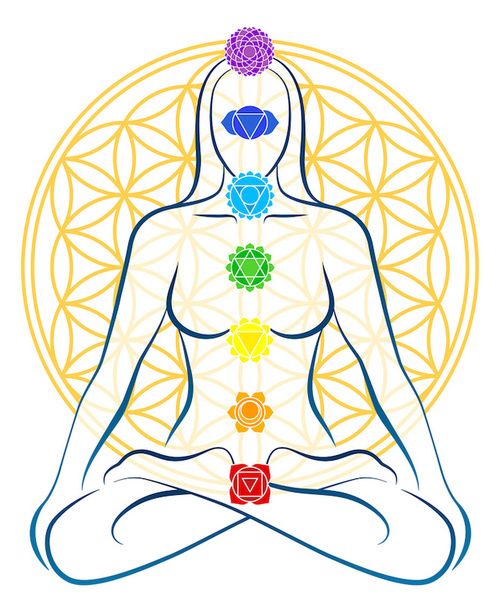
Here are some common visualization techniques used in Tantra Yoga:
Chakra Visualization
Chakras are the energy centers of the body that are believed to correspond to different physical, emotional, and spiritual aspects of the self. In Tantra Yoga, practitioners may use visualization techniques to activate and balance the chakras, such as visualizing a spinning wheel of energy at each chakra point.
Yantra Visualization
Yantras are sacred geometric symbols that are believed to have a powerful effect on the mind and body. In Tantra Yoga, practitioners may use yantras to focus the mind and connect with the divine. By gazing at a yantra or visualizing it in the mind’s eye, practitioners can harness the energy and power of the symbol.
Deity or Murthy Visualization
Tantra Yoga recognizes the importance of connecting with deities such as The Prime God of Destruction Shiva, Bhairava, and Goddess Kali that embody specific qualities and energies. Practitioners may use visualization techniques to connect with a particular deity or archetype, such as visualizing the deity’s image or symbol or imagining oneself embodying the qualities of the deity.
Nature or Prakriti Visualization
Tantra Yoga recognizes the healing power of nature and may use visualization techniques to connect with the natural world. Practitioners may visualize themselves in a natural setting, such as a forest or a beach, and imagine absorbing the healing energy and wisdom of nature.
Manifestation Visualization
Visualization can also be used in Tantra Yoga to manifest one’s desires and goals. Practitioners may visualize themselves achieving their goals, such as finding a fulfilling career or attracting a loving relationship and imagine the feelings and sensations associated with that achievement.
The Benefits of Tantra Yoga for Mental and Physical Health
Tantra Yoga offers a range of physical, mental, and spiritual benefits. Here are some of the ways in which Tantra Yoga can promote health and well-being:
Reduces Stress and Anxiety
Tantra Yoga incorporates meditation, pranayama, and other relaxation techniques that can help reduce stress and anxiety. These practices’ deep breathing and focused attention can calm the nervous system and promote relaxation.
Increases Flexibility and Strength
Like other forms of yoga, Tantra Yoga incorporates physical postures or asanas that improve flexibility, strength, and overall physical health. The asanas are designed to stimulate and balance the flow of energy in the body, which can promote physical well-being.
Balances Hormones
Tantra Yoga recognizes the importance of balancing the energy centers of the body, which can have a positive impact on hormonal balance. Practices such as chakra visualization and pranayama can help regulate hormones, which can improve physical and mental health.
Boosts Immune System
Tantra Yoga can boost the immune system by reducing stress and promoting relaxation. Studies have shown that stress can weaken the immune system, so by reducing stress and promoting relaxation, Tantra Yoga can improve overall health.
Enhances Sexual Health
Tantra Yoga recognizes the importance of sexual energy as a powerful force for transformation and spiritual growth. By cultivating a deeper connection with oneself and one’s partner, Tantra Yoga can enhance sexual health and promote deeper intimacy.
Improves Mental Clarity and Focus
Tantra Yoga incorporates meditation and visualization techniques that can improve mental clarity and focus. These practices can help calm the mind, improve concentration, and promote a sense of inner peace.
Promotes Spiritual Growth
Tantra Yoga recognizes the interconnectedness of all things and aims to connect the individual with the universal consciousness. Through practices such as meditation, visualization, and rituals, Tantra Yoga can promote spiritual growth and a deeper sense of connection with the divine.
How to Incorporate Tantra Yoga into a Daily Routine?
Incorporating Tantra Yoga into a daily routine can be a powerful way to cultivate greater health, well-being, and spiritual growth. Here are some tips on how to integrate Tantra Yoga practices into your daily routine:
- Start with a Morning Practice: Begin your day with a morning Tantra Yoga practice, such as meditation, pranayama, or asanas. This can set the tone for your day and help you feel more grounded, centered, and energized.
- Take Breaks for Breathing Exercises: Throughout the day, take short breaks to practice breathing exercises, such as alternate nostril breathing or deep belly breathing. These practices can help reduce stress, improve mental clarity, and promote relaxation.
- Connect with Nature: Spend time in nature and practice visualization techniques to connect with the natural world. This can involve visualizing yourself in a natural setting or meditating on the beauty and wisdom of the natural world.
- Incorporate Rituals: Incorporate Tantric rituals into your daily routine, such as lighting candles, offering incense, or reciting mantras. These rituals can help cultivate a deeper connection with the divine and promote spiritual growth.
- Practice Tantra Yoga with a Partner: Tantra Yoga can be practiced with a partner to enhance intimacy and connection. Consider incorporating partner yoga or other Tantric practices into your daily routine to deepen your connection with your partner.
- End the Day with Reflection: At the end of the day, take some time to reflect on your experiences and emotions. This can involve journaling, meditating, or simply sitting in silence. This can help promote self-awareness and cultivate greater inner peace and clarity.
Incorporating Tantra Yoga into a daily routine requires a commitment to self-care and spiritual growth. By integrating Tantric practices into your daily life, you can cultivate greater health, well-being, and spiritual connection.
Conclusion
Tantra Yoga is a holistic practice that can offer numerous benefits for modern individuals seeking spiritual growth, mental and physical health, and self-awareness. By understanding the philosophy and principles of Tantra Yoga, and incorporating the techniques and practices into a daily routine, individuals can enhance their overall well-being and live a more fulfilling life.
References
- https://indianculture.gov.in/ebooks/tantra-yoga
- http://mea.gov.in/images/attach/Booklet_English_2017.pdf
- https://yoga.ayush.gov.in/
- https://yoga.ayush.gov.in/Yoga-History/
- https://www.nacin.gov.in/resources/file/downloads/Common%20Yoga%20Protocol.pdf
- https://iisdt.in/product/diploma-in-meditation-yoga-and-tantra/
